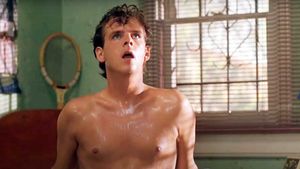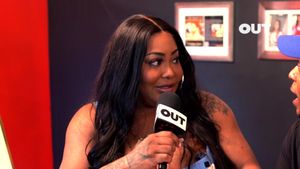It's 10 o'clock at night, I've just biked home from yet another disappointing date, and the last thing I want to hear from any well-meaning friend is "There are plenty more fish in the sea." Screw the sea. I'm done dating. I make a quick list of all the personal goals that I will prioritize over the next month, because I just need to focus on myself for a bit. Because -- as Harry Potter discovered with the Sorcerer's Stone -- if I'm not searching for love, that's when I'll actually find it ... right?
Perhaps.
I'll have to wait to find the answer to that question because I quickly find myself back in the deep end, swimming (or rather swiping) through a seemingly never-ending supply of potential future dates, all thanks to my ever-ready dating app. With a pocket-size tool that makes it so easy to meet so many new people, it's no wonder that searching for a meaningful connection can feel overwhelming. Psychologists call this phenomenon choice overload: when "more options lead to fewer selections -- and, it turn[s] out, less satisfaction with the choices made." For those searching for love in the digital age, this can sound all too familiar.
Still, because of the reality of our digital world, more and more people begin their relationships like me: online and through dating apps. And that can be great. These digital tools expand preexisting social networks for everyone, thus widening the metaphorical sea and the number of potential partners we have the opportunity to meet. For people who face a so-called thin market of potential partners, like middle-aged heterosexuals, people of color, or members of the LGBTQ community, these digital tools are often the first and only place to find a partner. In fact, a 2012 sociological paper found that for same-sex couples -- comprising fewer than two percent of all the couples in the U.S. -- close to 70 percent of relationships started online.

In his latest photo project, New York-based photographer Leo Chang set out to explore this new paradigm and lay bare some of the idiosyncrasies of online dating, particularly among gay men who overwhelmingly begin relationships online. The inspiration behind the project largely stemmed from personal experiences and conversations Leo had with other gay millennial men trying to find meaningful connections in the digital age. Part of Leo's goal is to peel away the self-aware gloss of perfectly polished dating profiles to reveal tenderness and vulnerability in gay male relationships. One way this goal manifests itself is in his decision to use film rather than digital photography:
"Conceptually, [film is] almost an antithesis to how fast we make connections and how fast our lives move today, especially given the digital component of our lives. Because on Instagram, everything has a gloss, everything has to be perfect, and everybody likes to project the most perfect version of themselves. With film ... it's a more raw moment and a real moment and that's what I want to capture."
Leo's focus on sharing intimacy over social media "gloss" reflects conversations I've had with other young people. Emefa Addo Agawu, a program associate at New America, shared her thoughts with me in a recent interview when I asked her about the realities of love and intimacy in the digital age:
"I do think the biggest challenge to intimacy is being so aware of oneself, because when you're so aware of yourself, you just have less energy available to be present and to receive information about this other person with whom you might have (any kind of) a relationship. I suspect that anyone who is social media-fluent develops a kind of self-awareness that I just don't think previous generations had, or had to have, or knew how to have."
Similarly, Leo said he chose to look at the relationships of gay millennial men in the digital age precisely because of those contradictions; on the one hand, the "accessibility and breadth of opportunity" that apps have provided for LGBTQ people and, on the other hand, the difficulty in making intimate, meaningful connections.

For people of color and transgender folk, the nuances and difficulties of digital dating multiply. Leo told me about one recent controversy involving a popular gay social media account. The account, which was popular for highlighting male beauty, said it would not post photos of "thicker people" or "even Asians" because they couldn't "make [the account owner] fall in love."
Part of Leo's goal with his photo series is to highlight some of these thorny issues that can inhibit meaningful connections in the gay community. In fact, his work may resonate for many millennials of diverse backgrounds who are increasingly having a hard time finding love. A recent Gallup poll found that millennials of all sexualities are more and more likely to report being single and living alone, from 52 percent in 2004 to 64 percent in 2014, despite still expressing "a significant desire for marriage." While millennials often express their love and commitment outside of marriage, the fact that the desire for marriage is still high illustrates the sustained longing for companionship.
Not only are marriage rates dropping, couples are also splitting up more frequently. Perhaps unsurprisingly, this was especially true following the 2016 presidential election. One survey following the election found that one in 10 Americans ended a relationship over their political differences, a number that jumps to over one in five when surveying American millennials.
With the alarming realization that I'm starting to sound just like my parents, I asked myself this question: Why do millennials find it more difficult to start relationships and then break up faster once they've begun?
One answer could simply be that millennials feel less time pressure to find a suitable partner and are willing to be more selective at a younger age. But this doesn't explain why previous generations married younger and stayed in relationships longer. So there must be another answer.
Already, we've discussed some of the factors that could influence this new reality: hyper self-awareness that may inhibit intimacy and choice overload that paralyzes decisions. On top of this, the financial realities following the Great Recession made love and long-term commitments feel like a big risk for many millennials. For LGBTQ individuals, despite the advent of online dating, there are still far fewer people seeking queer relationships and there are still instances of discrimination as mentioned above.
But this doesn't have to be the norm.
By photographing and sharing moments of private tenderness, Leo's art moves us closer to a world where love and intimacy, in all its forms, is not only accessible but is publicly celebrated. The displays of love, vulnerability, and empathy that Leo highlights are especially important in today's hyper polarized political context and move us closer to a world that upholds justice. "It's a slow process to make progress," Leo says, "but change is possible. I already think there is a bridging of the gap, slowly, between what love can look like in private and what it can look like in public."
This article originally appeared on New America's blog.
DILLON ROSEEN is a millennial public policy fellow in New America's Cybersecurity Initiative. Roseen, from Peachtree City, Ga., was a Fulbright Scholar in Amsterdam, where he conducted research on the intersection of law, politics, and international security. Previously, he graduated with highest honors from the Georgia Institute of Technology, where he studied economics and international affairs and served as student body president. His interests include the international law and national security dimensions of cybersecurity policy.




















































































